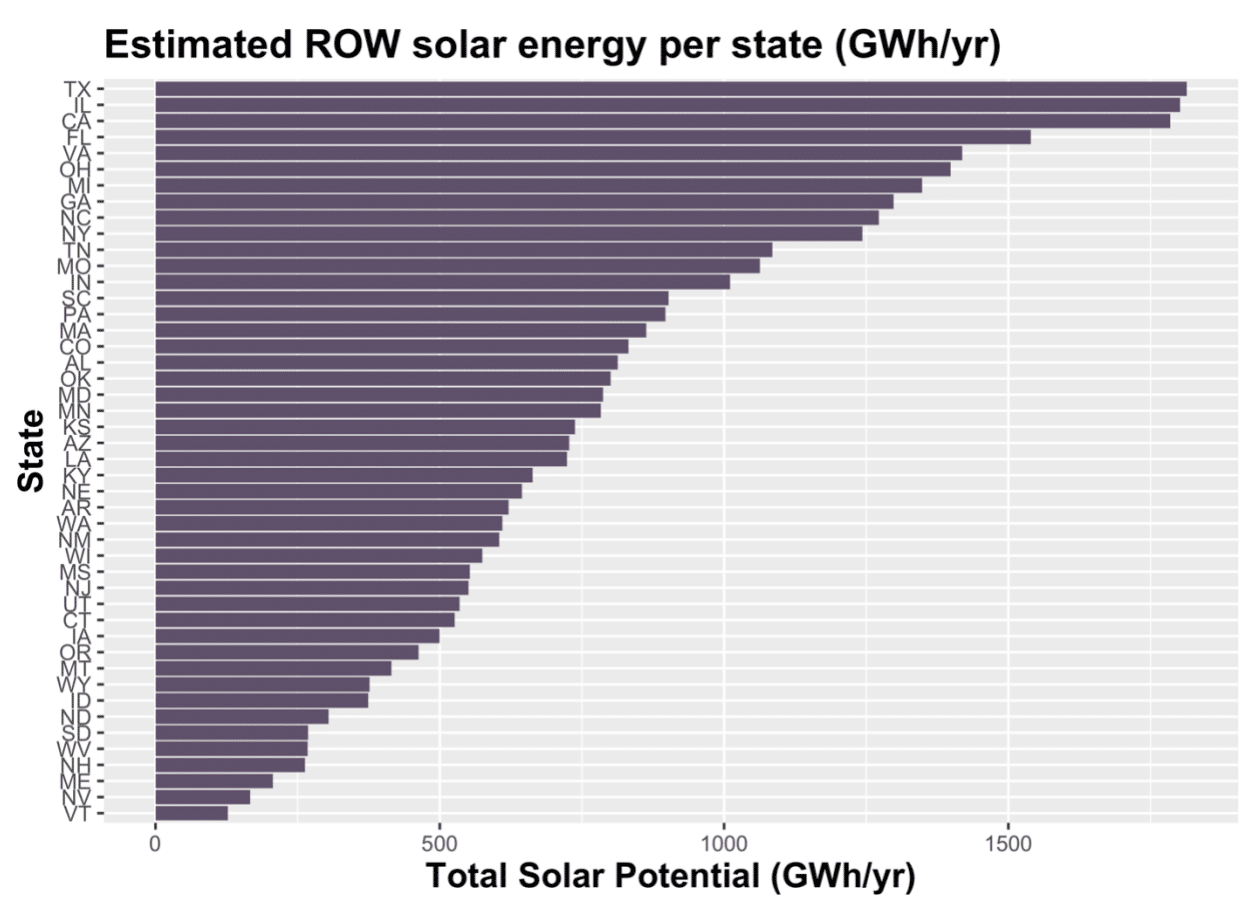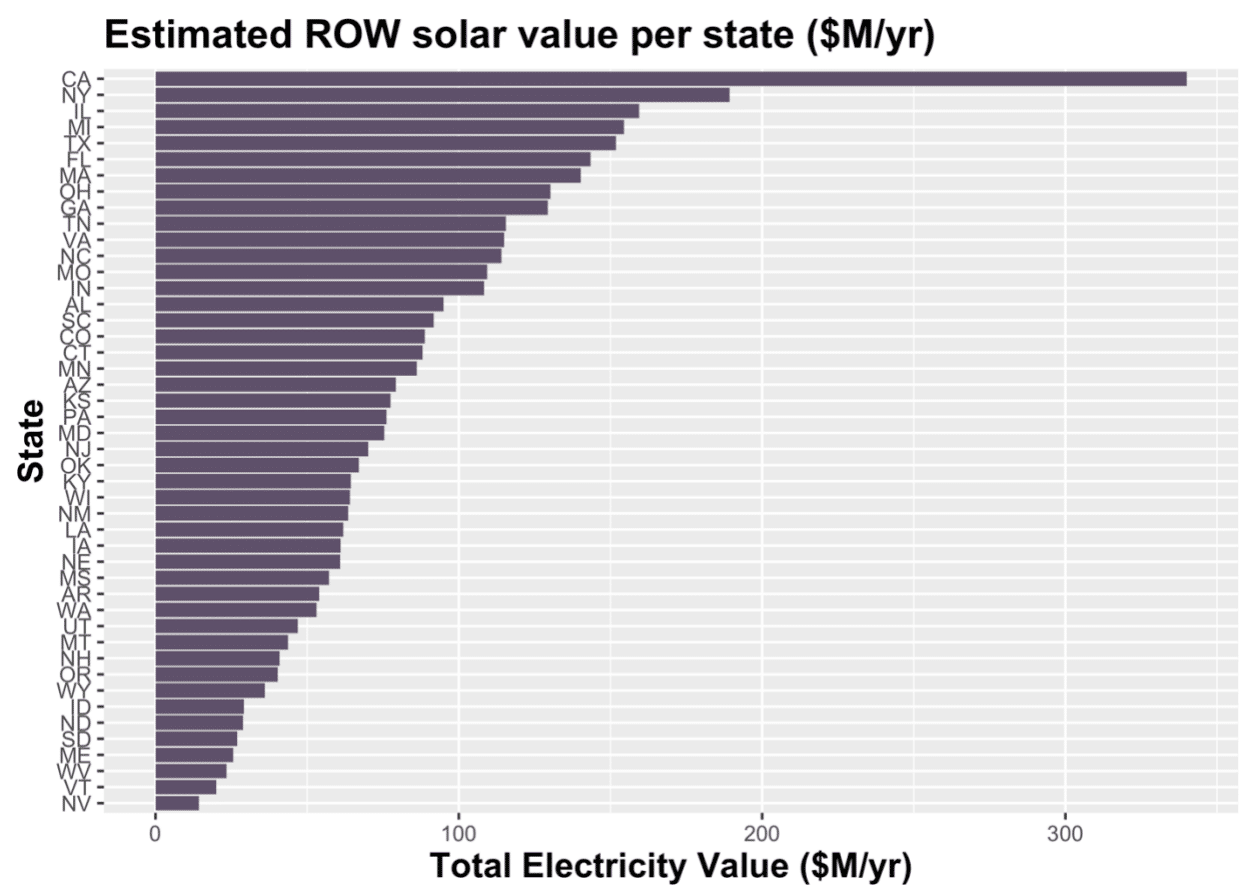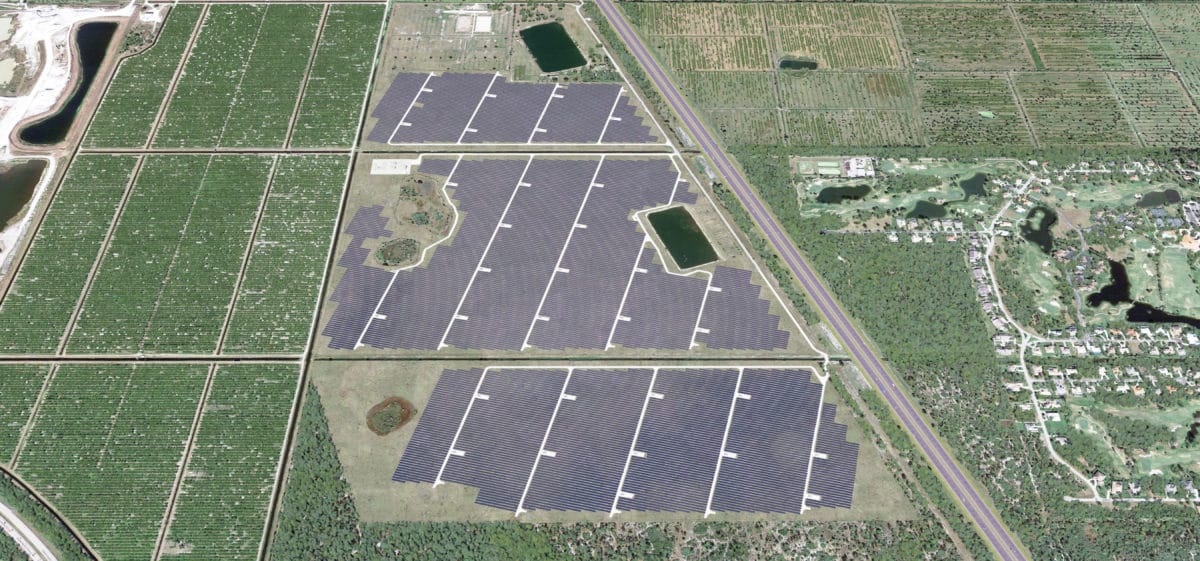As more states establish renewable energy mandates and expand the penetration of solar onto their grids, officials and developers are finding, especially in more densely populated areas of the country, that locating land for these projects can be tricky. A new study released by the University of Texas at Austin’s Webber Energy Group looks to solve some of these siting issues using publicly available and under-utilized lands: interstate exits.
The report looks at the entirety of land surrounding interstate highways, finding that the majority of right-of-way (ROW) lands come in long, narrow stretches along interstates. These stretches are generally too narrow to allow for installation of solar PV while meeting all existing safety and other regulations governing ROW use and development.
With this in mind, the authors of the report settled upon analyzing the solar potential of ROW lands at interstate exits and interchanges. Their methodology became a mapping tool, developed in partnership with The Ray, of a section of Interstate 85 in Georgia that is often a site for testing innovations in highway technology. This area includes a 1-MW solar array.
The authors had other existing ROW solar installations to supplement their research, including a 1.9 MW installation across two sites in Oregon, a 4.3 MW series of projects across eight sites in Massachusetts, and a 1.8 MW series of installations across five sites in Maryland.
Additionally, much of the methodology used in creating the mapping tool and projections was based on geographic information system (GIS) data showing the exact ROW boundaries along interstates in Iowa, the only state that the authors found to keep such detailed ROW data.
The results
For the purpose of this report, analysis was restricted to interstate interchange locations. The authors found that most states have more than 200 miles of suitable interstate frontage remaining, totaling between 440 and 6,600 acres of ROW area in interchanges available for solar installation.
While that variance in area is big, the even greater variance comes in the estimations of retail electricity prices and solar capacity factors, as well as total area available by state. The authors did find that most states have solar potential in the thousands of GWh per year, with numbers ranging anywhere from 127 to 1,814 GWh annually, as well as several hundreds of millions of dollars of prospective revenue to the state.

Broken down by state, Texas has the most potential solar energy (GWh/yr) per year if every identified interchange in each state were developed with solar, with well over 1,750 GWh/year. Illinois and Clifornia follow in second and third, respectively. After the top three there is a considerable drop-off, with Florida coming in fourth and Virginia rounding out the top-5.
The measurements for annual solar generation potential exclude Delaware and Rhode Island, for lack of available interchanges to develop.

As for the potential solar energy value ($M/yr) per year if every identified interchange in each state were developed with solar, California is comfortably at the head of the pack, with nearly $350 million in potential annual value. Coming in second is New York at just under $200 million annually, followed by Illinois, Michigan and Texas, respectively, each of which are just above $150 million annually. This is where variablility in electric prices comes into play. Even though Texas has much more ROW solar potential than California, each MW of California ROW solar is more valuable.
This methodology isn’t perfect, nor does it tell the full story. The report admits that rest areas could significantly supplement potential ROW solar capacity, but there is not currently enough available data regarding solar installations at rest areas to develop an effective methodology to track potential capacity. The report was also developed with fairly limited ROW information, as Iowa is the only state to have publicly-available GIS data on ROW boundaries.
This content is protected by copyright and may not be reused. If you want to cooperate with us and would like to reuse some of our content, please contact: editors@pv-magazine.com.









High voltage power line right-of-ways are also a consideration. This would entail considerable expense to clear adjacent trees to fully utilize the land area but that could be a good thing in drought stricken places like western states. A major consideration for many projects is proximity to existing 3-phase power so maybe less an issue with this land.
Why in the world would you build solar on land that’s often far from where the electricity would be used? Then, you have to add all the cost to connect supply to user. And considering that cars often get in accidents or run off the road, the value of these should be reduced by losses expected from accidents, thrown rocks, etc.
A much better study would be looking at unused roof space atop malls, shopping centers, big box stores, gas stations, etc. That space is typically wasted, and it’s exactly where the electricity would be used, and the infrastructure to connect to the grid already exists.